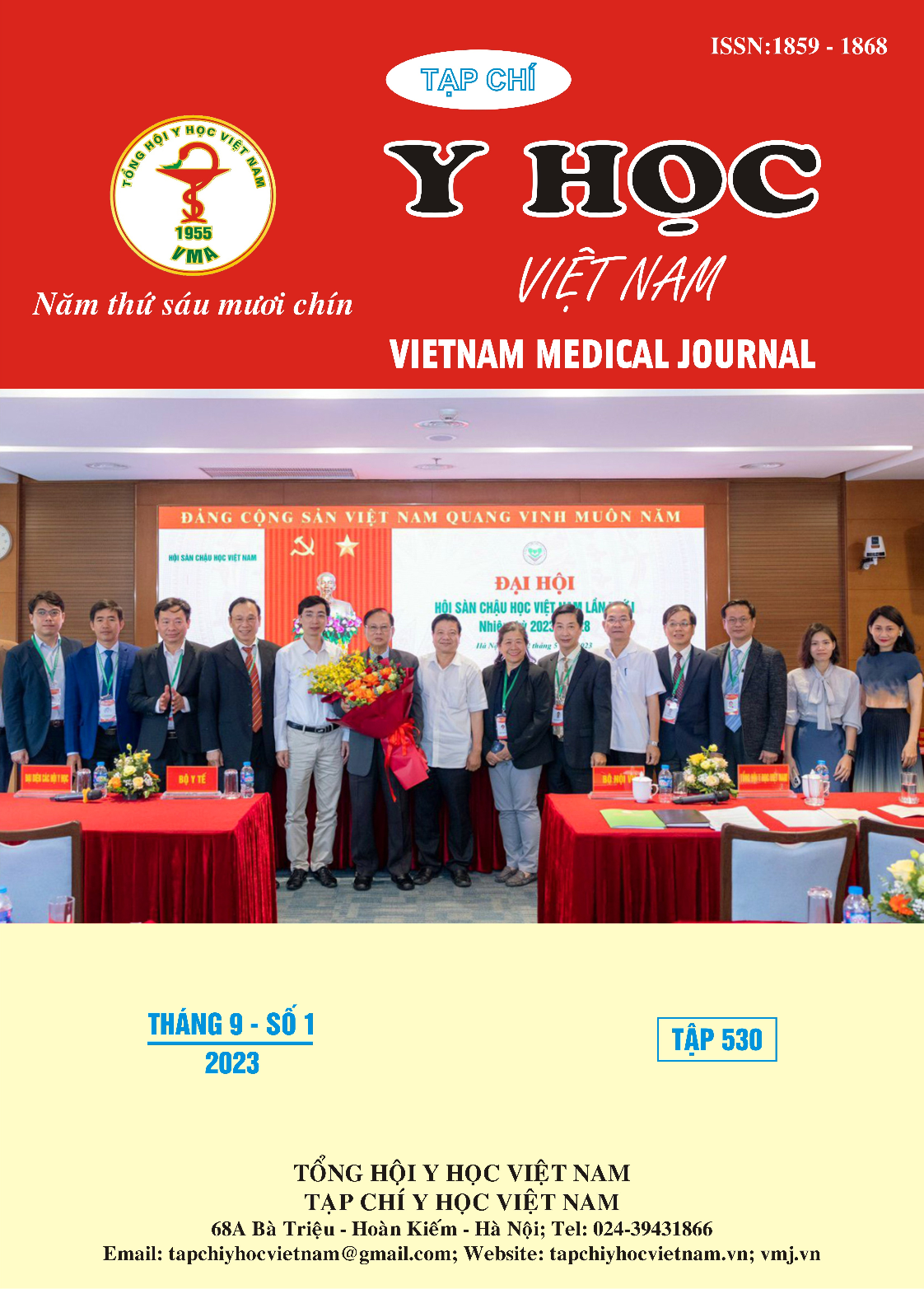FACTORS PREDICTING 1-YEAR MORTALITY AFTER TRANSCATHETER AORTIC VALVE IMPLANTATION IN ELDERLY VIETNAMESE PATIENTS WITH SEVERE AORTIC VALVE STENOSIS: INSIGHTS FROM A SINGLE-CENTER EXPERIENCE
Main Article Content
Abstract
Objectives: This study aimed to identify the prognostic factors for one-year mortality in elderly Vietnamese patients with symptomatic severe aortic valve stenosis undergoing transcatheter aortic valve implantation (TAVI). Patients and methods: From March 2017 to December 2022, 71 patients (≥60 years old) with symptomatic severe aortic valve stenosis underwent TAVI at Vinmec Central Park Hospital, with a minimum follow-up duration of 1 year. The patient characteristics were analyzed and compared between two groups (survival and mortality) at the one-year mark using VARC-2 criteria. Results: Four patients (5.6%) died within one year after TAVI. The mortality group had a higher prevalence of chronic heart failure, cerebrovascular disease, STS surgical risk score, bicuspid aortic valve, and mean and peak transaortic pressure gradient in the mortality group. Conversely, the survival group had a higher left ventricular ejection fraction (LVEF) and device success rate. Univariate logistic regression analysis identified five factors associated with increased one-year mortality after TAVI, including chronic heart failure, cerebrovascular disease, STS surgical risk score, mean transaortic pressure gradient, and failure of device implantation. Conclusion: The study conducted on 71 elderly Vietnamese patients with severe symptomatic aortic valve stenosis who received TAVI at a single center identified predictive factors for mortality within 1-year, including chronic heart failure, cerebrovascular disease, STS surgical risk score, mean transaortic pressure gradient, and device implantation failure.
Article Details
Keywords
1-year mortality, TAVI, Vietnam.
References
2. Malik, A.H.; Zaid, S.; et al. A meta-analysis of 1-year outcomes of transcatheter versus surgical aortic valve replacement in low-risk patients with severe aortic stenosis. J Geriatr Cardiol 2020, 17, 43-50.
3. Maeda, K.; Kumamaru, H.; et al. A Risk Model for 1-Year Mortality After Transcatheter Aortic Valve Replacement From the J-TVT Registry. JACC Asia 2022, 2, 635-644.
4. Kappetein, A.P.; Head, S.J, et al. Updated standardized endpoint definitions for transcatheter aortic valve implantation: the Valve Academic Research Consortium-2 consensus document (VARC-2). Eur J Cardiothorac Surg 2012, 42, S45-60.
5. Greason, K.L.; Eleid, M.F.; et al. Predictors of 1-year mortality after transcatheter aortic valve replacement. J Card Surg 2018, 33, 243-249.
6. Kjønås, D.; Schirmer, H.; et al. Clinical and Echocardiographic Parameters Predicting 1- and 2-Year Mortality After Transcatheter Aortic Valve Implantation. Front Cardiovasc Med 2021, 8, 739710.
7. Yoon, S.H.; Ahn, J.M; et al. Clinical Outcomes Following Transcatheter Aortic Valve Replacement in Asian Population. JACC Cardiovasc Interv 2016, 9, 926-933.
8. Li, Y.M.; Xiong, T.Y.; Xu, K.; et al. Characteristics and outcomes following transcatheter aortic valve replacement in China: a report from China aortic valve transcatheter replacement registry (CARRY). Chin Med J (Engl) 2021, 134, 2678-2684.


